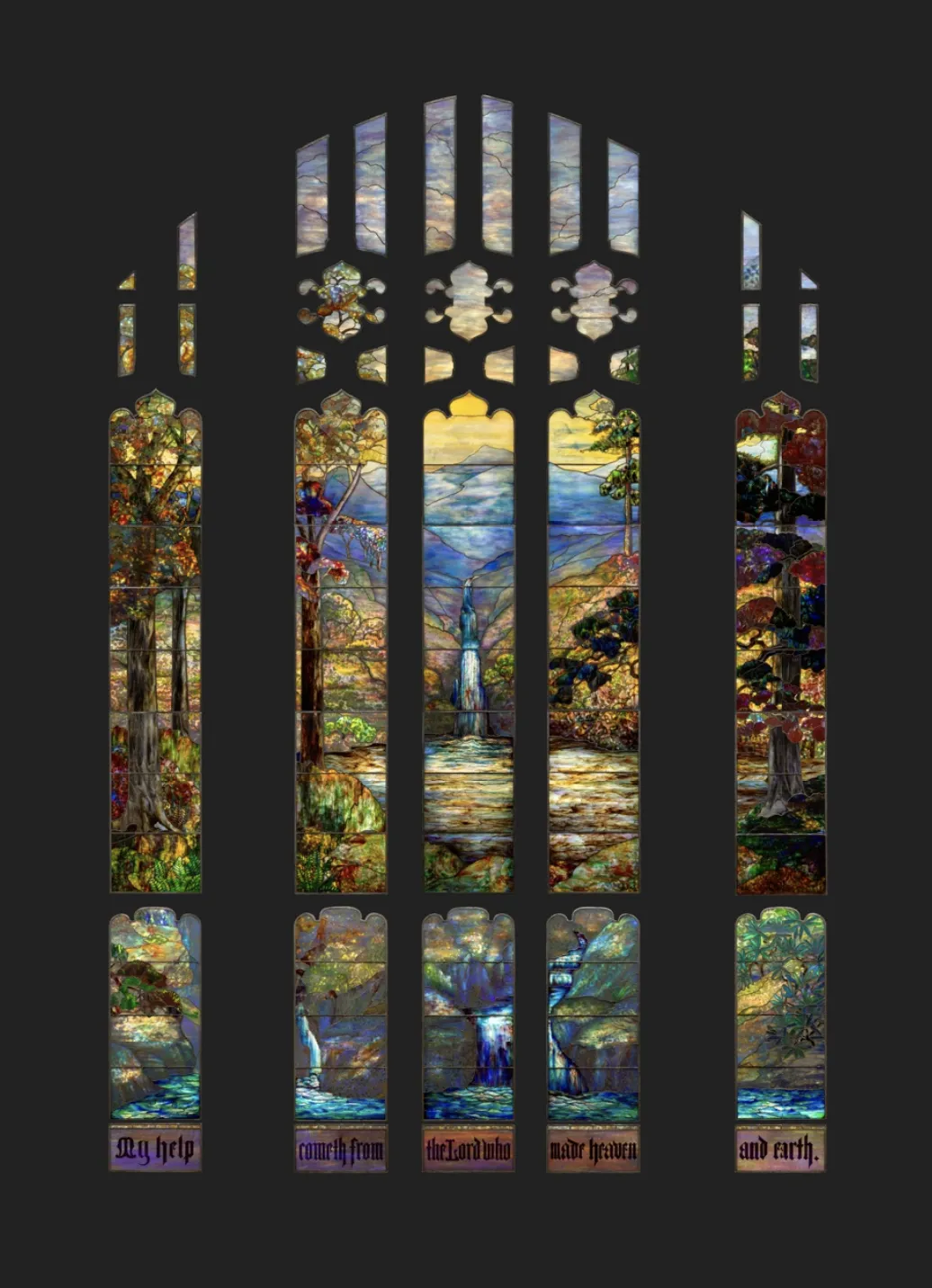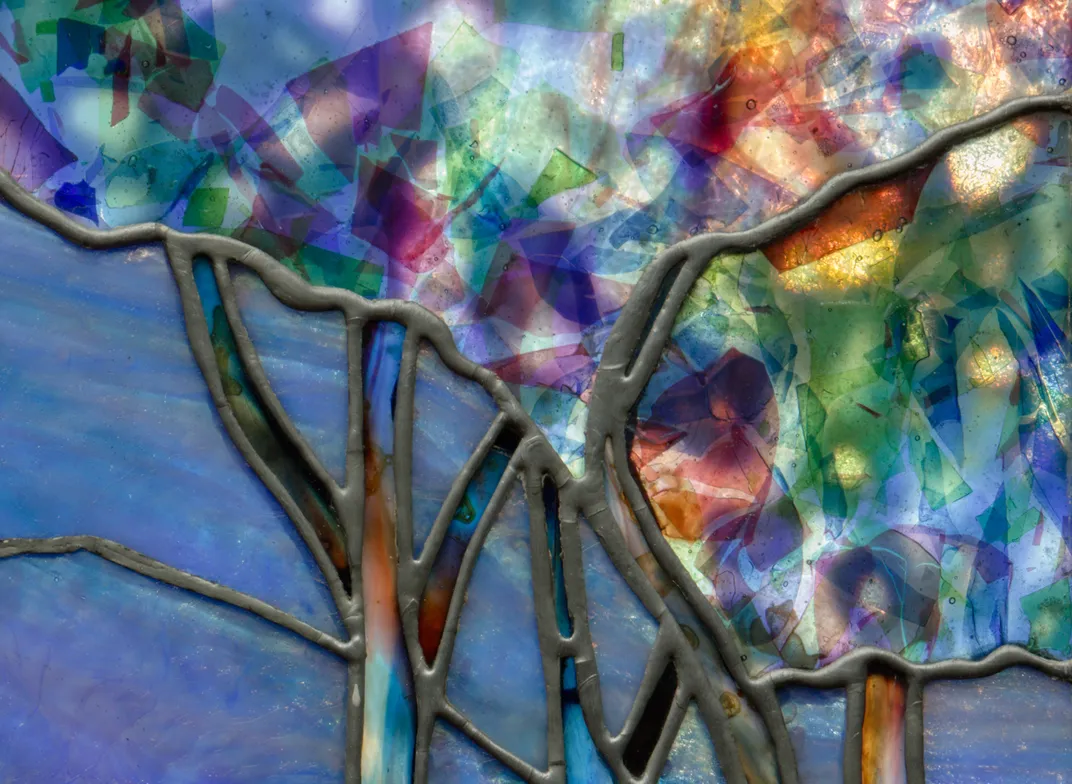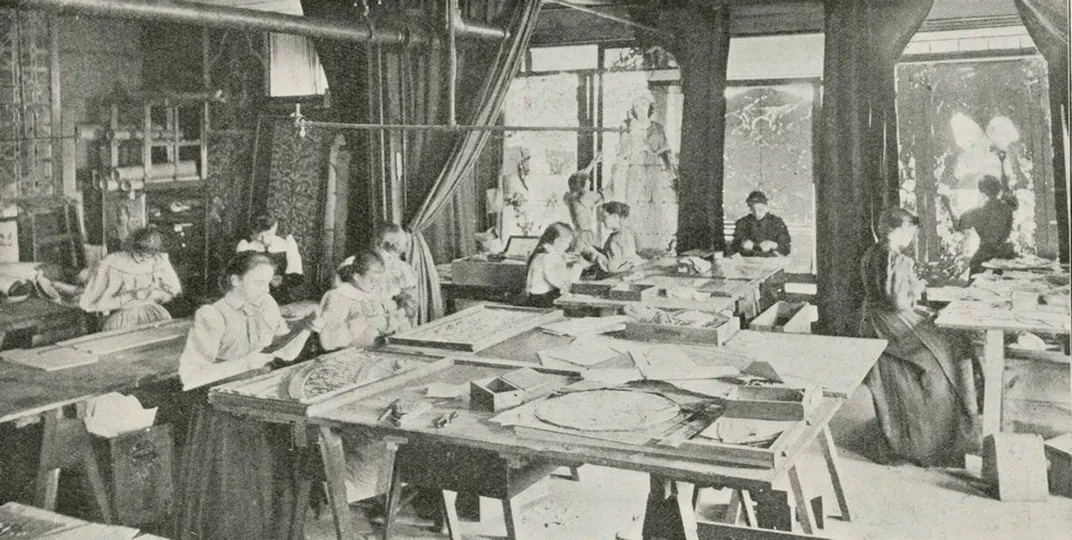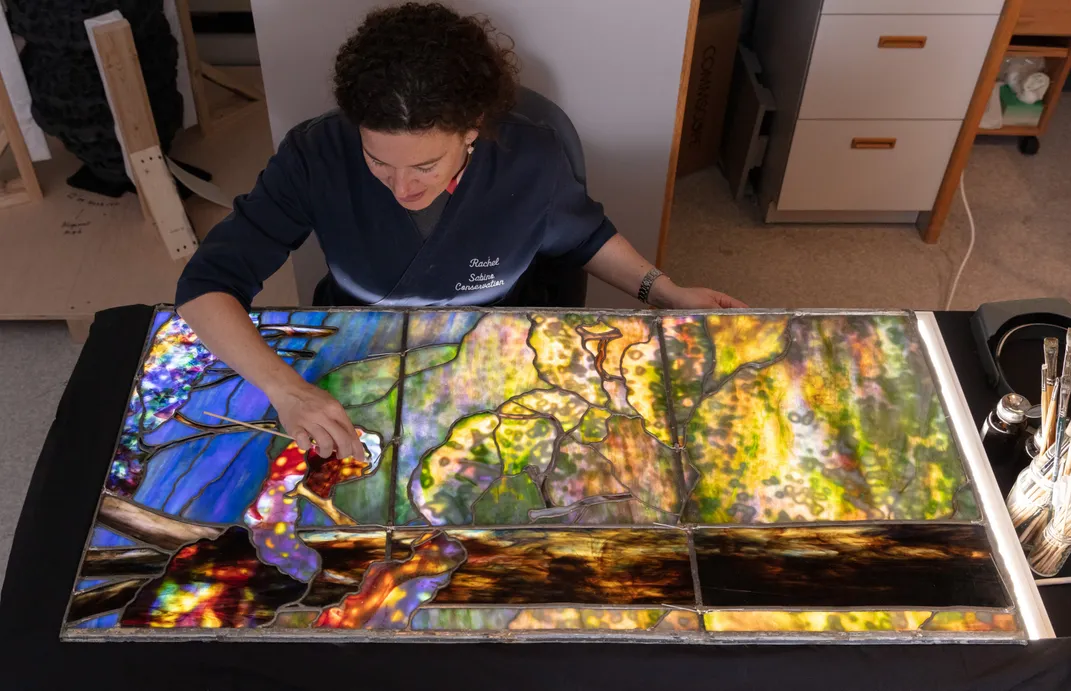Stunning Tiffany Stained Glass Debuts After 100 Years of Obscurity
The enormous, luminescent landscape spent nearly a century in Providence before its 2018 acquisition by the Art Institute of Chicago
:focal(791x283:792x284)/https://tf-cmsv2-smithsonianmag-media.s3.amazonaws.com/filer/b9/59/b959091f-75f5-45de-aae1-724b13165d75/screen_shot_2021-05-27_at_25624_pm.png)
For nearly a century, a monumental Tiffany stained-glass window hung in near-total obscurity at a Providence, Rhode Island, church. Now known as the Hartwell Memorial Window, the shimmering landscape was installed in 1917 and attracted just a handful of visitors each year, as Donita Naylor reported for the Providence Journal last February.
Starting this weekend, thousands of art lovers will have the chance to gaze upon the monumental window at the Art Institute of Chicago (AIC). The museum purchased the Tiffany window in 2018, painstakingly shipping the work across the country. Since making the acquisition, the AIC has undertaken a years-long restoration of the century-old glass to prepare it for public viewing, reports Kyle MacMillan for the Chicago Sun-Times.
The iridescent tableau depicts a peaceful New Hampshire landscape full of lush, multi-colored trees. Dappled sunlight bounces off a flowing waterfall, while the imposing Mount Chocorua looms in the background. Per Steve Johnson of the Chicago Tribune, Tiffany artists soldered 48 layered-glass panels together to produce the 23-foot-high by 16-foot-wide scene.
In the work, “[w]arm light emanates from the setting sun, catching on the rushing waves of the central waterfall and dancing through the trees—the transitory beauty of nature conveyed through an intricate arrangement of vibrantly colored glass,” writes AIC curator Elizabeth McGoey in a museum blog post.
Wealthy Rhode Island resident Mary L. Hartwell commissioned the window for her congregation after her industrialist husband died in 1911, per the Providence Journal. Though the window was installed in a church, the landscape was not designed as overtly religious.
“Situated high above the altar, the landscape invited peaceful contemplation,” says AIC curator Sarah Kelly Oehler, who visited the window in its original location, in a separate blog post. “I could absolutely see how Tiffany Studios suggested the connection between the spiritual and earthly realms through this extraordinary landscape design.”
Hartwell recruited Tiffany Studios, the popular New York City glassmaking studio known for its richly colored designs, for the project. Founded by artist Louis Comfort Tiffany (1848–1933) in the 1870s, the firm’s patented Favrile glass and intricately crafted lamps and windows became some of the most recognizable symbols of decorative arts during the American Gilded Age.
According to a statement, Agnes Northrop (1857–1953), Tiffany’s foremost landscape window artist, likely designed the work. She numbered among the so-called “Tiffany Girls,” a cadre of talented women who were crucial to the studio’s creative and technical operations.
A 2006 exhibition at the New-York Historical Society debuted new research into these women’s underappreciated artistic labor. The team focused especially on Clara Driscoll (1861–1944), a lead Tiffany designer who directed the Women’s Glass Cutting Department and designed around 30 lamps during her almost 20-year tenure at the company.
Thanks in large part to Driscoll and Northrop’s achievements, Tiffany Studios became known in the early 20th century for “painting with glass,” using various advanced techniques to create textural effects such as swirls, confetti-like flecks, colorful streaks and opalescent sheens.
Oehler tells the Sun-Times that she considers the newly installed window a companion to the Art Institute’s other stained-glass mural, the America Windows (1977) by Russian-born artist Marc Chagall. The monumental glasswork depicts American national symbols and the Chicago skyline; it sits tucked behind an antiquities display in an out-of-the-way section of the museum.
Compared with the Chagall work, the Tiffany window will take center stage, appearing atop the sweeping double staircases that frame the museum’s South Michigan Avenue entrance. Curators designed a specialty backlighting system to mimic the effect of sunlight pouring through the work at all times, writes McGoey in a separate blog post about the installation process.
“Dazzling. Luminous. Monumental. Unparalleled. Transformative. These are some of the superlatives I’ve heard used to describe this window,” McGoey notes. “But we are confident there are plenty more to come.”
/https://tf-cmsv2-smithsonianmag-media.s3.amazonaws.com/accounts/headshot/nora.png)




/https://tf-cmsv2-smithsonianmag-media.s3.amazonaws.com/accounts/headshot/nora.png)